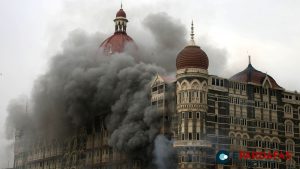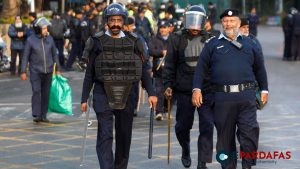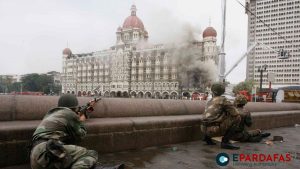
Roads, Development, and Destruction
The movie ‘Gaun Ayeko Bato’ transported me back in time, evoking memories of revolutionary songs like ‘Gaun Gaun Bata Utha, Basti Basti Bata Utha’, sung by the Jhapalis during the 1970s in their fight against the monarchy. Although the monarchy has since been abolished, our villages are now empty, with no one left to sing those songs of uprising.
The movie also reminded me of Shahid Marg (91 km), a road built by the Maoists during the People’s War. When I served as the Minister of Physical Planning and Works in 2007, I allocated a budget for that road. In the film, I saw how constructing a motorable road adversely impacted the Rai culture and economy. This made me worry about the effects of the metalled Shahid Marg on the Magars’ way of life.
As an architect from the Janjati community, I am acutely aware of how careless development can jeopardize indigenous ways of life, affecting their ‘gaans bas kapas’ (villages, homes, and capacities). I am not against development, but it should be inclusive and considerate of local cultures.
During the People’s War, we made efforts to integrate development with indigenous lifestyles in Thawang village. Magars in Rolpa, who eat a lot of pork, were introduced to salad to aid digestion and prevent constipation. They were also encouraged to separate pig breeding from their homes, where they previously fed pigs with human faeces directly. The Maoists helped them transform hemp into rucksacks, which were in high demand during the war.
The movie highlighted the replacement of local breweries with Coca-Cola, traditional rooftops with synthetic materials, and indigenous underwear with flashy synthetic lingerie. I recall how the Karnali region was neglected during the monarchy era. However, since Nepal became a republic and federal state, Karnali has flourished as a separate province, gaining access to basic amenities like hospitals, universities, and road networks. Products like marshi rice, millet, honey, and sishnu from Karnali are now available in Kathmandu malls. Yet, seeing the rapid replacement of indigenous ‘gaans bas kapas’ with consumerism, I worry about the future of Karnali if the government doesn’t protect their products.
Coincidentally, a few days after watching the movie, I attended a photo exhibition by Rashtriya Samachar Samiti (RSS) on Republic Day, showcasing major infrastructure development projects across the country. I was struck by the economic viability of these projects, the participation and ownership of the local people, and whether they would benefit the locals. Without these considerations, Indian goods could flood our villages, given our extensive open border with India, which has a market nearly 80 times larger than Nepal’s.
The exhibition reminded me of my 30-day trip from Chiwa Bhanjyang in Ilam district, adjoining Sikkim, India, to Jhulaghat in Baitadi district, bordering Uttaranchal, India (Jan 29-Feb 27, 2019). This journey covered 28 districts along the Pushpalal Marg, a mid-hill highway that connects various Janjati and Khas communities. This road is so strategic that, had the government prioritized it before constructing the Mahendra Rajmarg, migration from the hills to the Tarai could have been checked.
After seeing the movie, I became curious during my recent 10-day trip from Ilam to Kanchanpur (June 27-July 7, 2024), covering 18 districts. Throughout the highway, I saw almost no economic activities except children waiting for school buses to reach private schools in the mornings and evenings. This reminded me of how remittance money has accelerated the flow of people from villages to small towns and cities near highways, flourishing private English boarding schools in these areas. The movie’s scene of a child repeatedly calling ‘Papa’ and the father’s pride in hearing his son speak English came to mind.
Lastly, I consider myself lucky to have returned safely to Kathmandu after a harrowing 10-day trip. I witnessed the destruction of roads, houses, and paddy fields due to flooding and landslides, which killed people and animals and destroyed goods. At one point, we were stuck on the road due to a massive landslide ahead and flooding behind. We had to backtrack once the rain stopped. This reminded me of the reforestation and check dam initiatives in Thawang during the People’s War to protect the village from surrounding rivers.
Unfortunately, the same Maoist force that has been in government for the last nine years has hardly been effective in implementing sustainable development. Instead, they have been preoccupied with power struggles.
(The writer is a politician and architect)














Comments